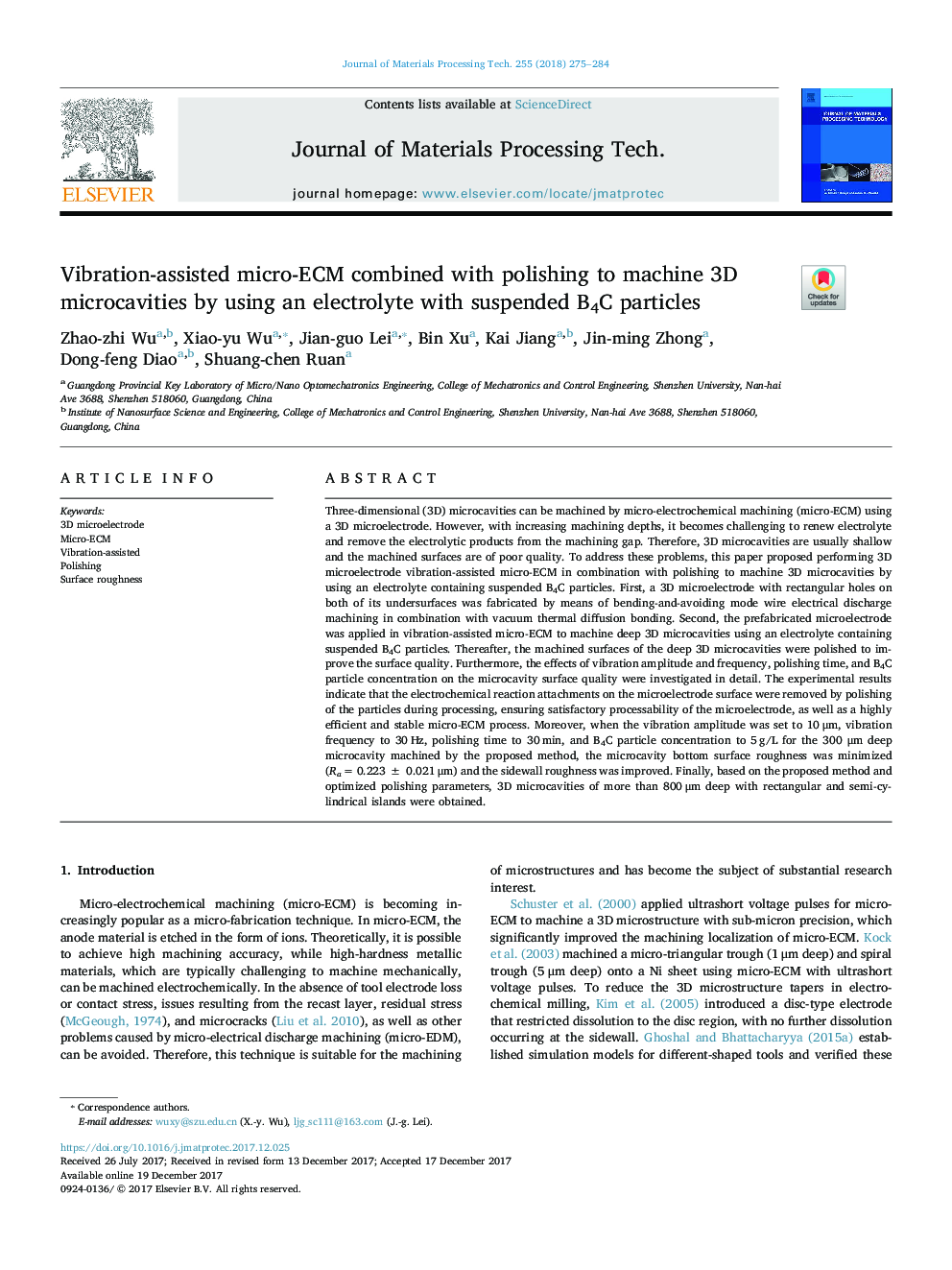| Article ID | Journal | Published Year | Pages | File Type |
|---|---|---|---|---|
| 7176441 | Journal of Materials Processing Technology | 2018 | 10 Pages |
Abstract
Three-dimensional (3D) microcavities can be machined by micro-electrochemical machining (micro-ECM) using a 3D microelectrode. However, with increasing machining depths, it becomes challenging to renew electrolyte and remove the electrolytic products from the machining gap. Therefore, 3D microcavities are usually shallow and the machined surfaces are of poor quality. To address these problems, this paper proposed performing 3D microelectrode vibration-assisted micro-ECM in combination with polishing to machine 3D microcavities by using an electrolyte containing suspended B4C particles. First, a 3D microelectrode with rectangular holes on both of its undersurfaces was fabricated by means of bending-and-avoiding mode wire electrical discharge machining in combination with vacuum thermal diffusion bonding. Second, the prefabricated microelectrode was applied in vibration-assisted micro-ECM to machine deep 3D microcavities using an electrolyte containing suspended B4C particles. Thereafter, the machined surfaces of the deep 3D microcavities were polished to improve the surface quality. Furthermore, the effects of vibration amplitude and frequency, polishing time, and B4C particle concentration on the microcavity surface quality were investigated in detail. The experimental results indicate that the electrochemical reaction attachments on the microelectrode surface were removed by polishing of the particles during processing, ensuring satisfactory processability of the microelectrode, as well as a highly efficient and stable micro-ECM process. Moreover, when the vibration amplitude was set to 10â¯Î¼m, vibration frequency to 30â¯Hz, polishing time to 30â¯min, and B4C particle concentration to 5â¯g/L for the 300 μm deep microcavity machined by the proposed method, the microcavity bottom surface roughness was minimized (Raâ=â¯0.223â¯Â±â¯0.021â¯Î¼m) and the sidewall roughness was improved. Finally, based on the proposed method and optimized polishing parameters, 3D microcavities of more than 800â¯Î¼m deep with rectangular and semi-cylindrical islands were obtained.
Related Topics
Physical Sciences and Engineering
Engineering
Industrial and Manufacturing Engineering
Authors
Zhao-zhi Wu, Xiao-yu Wu, Jian-guo Lei, Bin Xu, Kai Jiang, Jin-ming Zhong, Dong-feng Diao, Shuang-chen Ruan,
